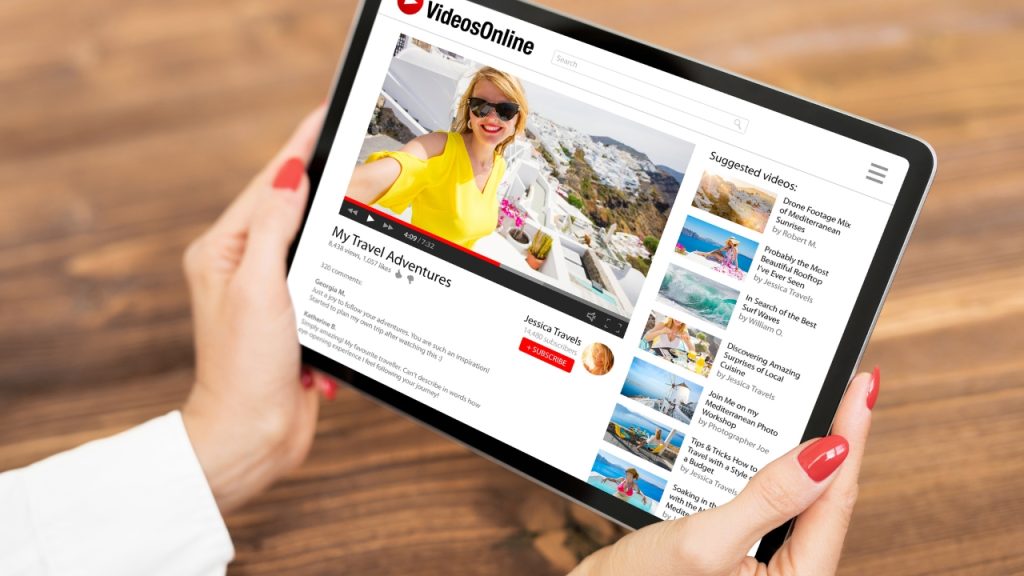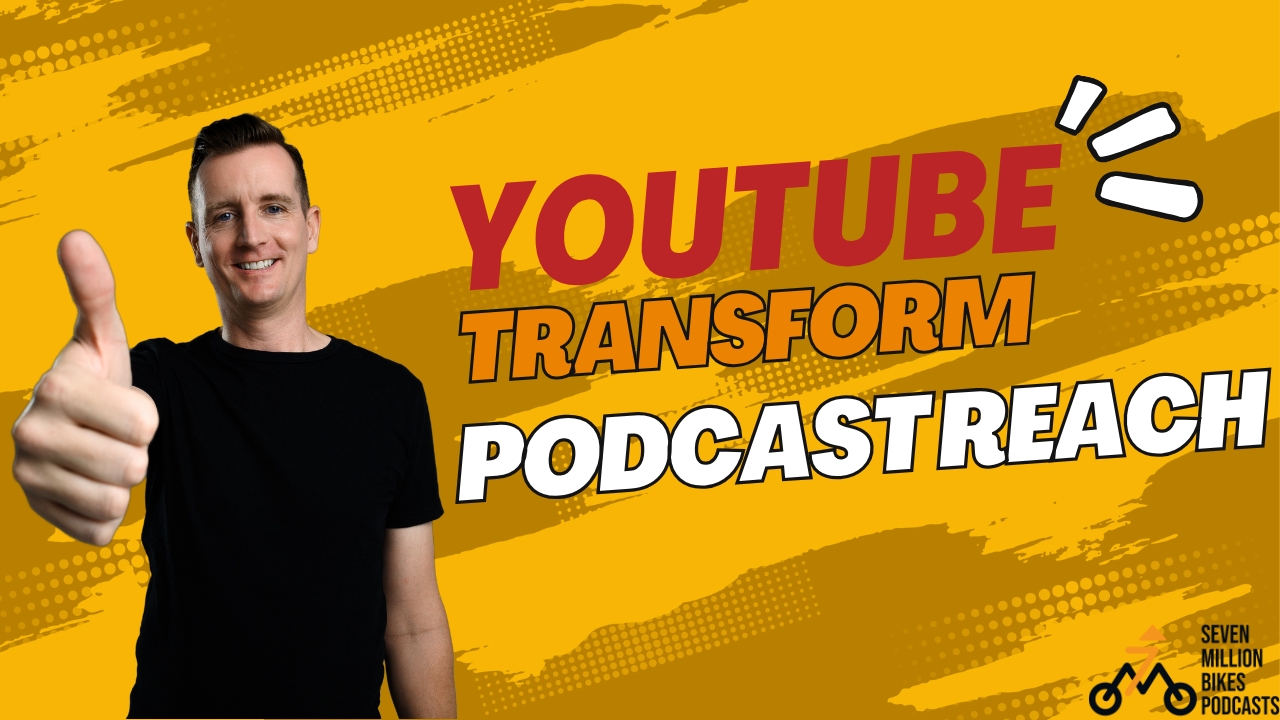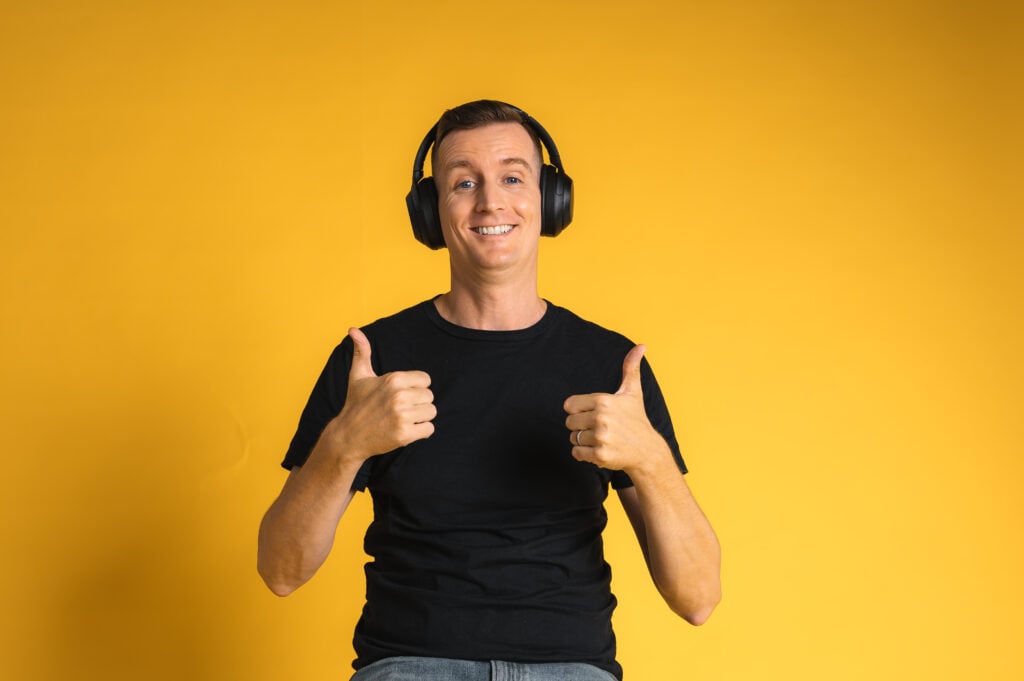How YouTube Transforms Your Podcast’s Reach
As podcasters, we’re always looking for ways to grow our audience, build our brand, and make our content more accessible. So have you ever thought of YouTube? In this blog post, I will tell you how YouTube transforms your podcast’s reach.
My name is Niall Mackay, founder of Seven Million Bikes Podcasts. When I first started, podcasting was an audio-only medium for me—something listeners tuned into during a commute or while working out. However, the landscape has changed, and platforms like YouTube have emerged as powerful tools for podcast discovery and engagement.
Table of Contents
Why You Should Bring Your Podcast to YouTube
When I started podcasting, I never considered YouTube as a viable platform for podcasts. To me, it was all about audio — traditional podcasting with an RSS feed. But over time, I realized just how dominant YouTube has become, especially in the U.S., where it’s now the most popular platform for podcast consumption. This revelation was mind-blowing.
- How Audiences Consume Podcasts
Initially, I couldn’t understand why anyone would use a video platform like YouTube to listen to podcasts. But as I dug deeper, I discovered that audiences were consuming podcasts on YouTube in ways I hadn’t considered.
For example, some people told me they listened to podcasts on YouTube at work because platforms like Spotify or Apple Podcasts were blocked. Others mentioned they would play YouTube in the background, essentially treating it like a podcast app. It didn’t matter that they weren’t watching the video — they were still engaging with the content. This was a huge realization for me, and it changed how I viewed YouTube as a tool for podcasters.
- Repurpose Content
Repurposing my podcast for YouTube opened up incredible opportunities. Suddenly, my content was reaching a wider audience. People were discovering my podcast not just through traditional directories but also by stumbling upon it on YouTube.

- Engagement
What surprised me the most was the engagement. Unlike on Spotify or Apple Podcasts, where comments aren’t a feature, YouTube allows listeners to leave feedback directly under the videos. That interaction was something I hadn’t anticipated but came to value immensely.
- Short-form content
Another game-changer was the potential of short-form content. By creating snippets and highlights from my episodes, I was able to grab the attention of new listeners who might not sit through a full episode. These quick, engaging clips boosted my visibility, helping me establish my authority in the podcasting niche and grow my brand. I’ve always believed that podcasting is about connection, and short-form content has proven to be a powerful way to make that first impression.
Using YouTube for YouTube isn’t just about following trends; it is about adapting to how audiences consume content today. For any podcaster aiming to grow their reach and build their brand, YouTube is a platform you can’t afford to overlook.
My Journey: From Audio-Only to Embracing Video
When I started podcasting in 2019, I was firmly in the audio-only camp. To me, a podcast was something you listened to, not watched. I resisted the idea of incorporating video because I believed that if a podcast didn’t have an RSS feed and wasn’t on platforms like Spotify or Apple Podcasts, it wasn’t a podcast at all. YouTube seemed like a completely different medium, and I wasn’t interested in exploring it.
I’ll admit, I was wrong. My mindset started to shift during the pandemic. Like many podcasters, I was forced to adapt to remote interviews, which meant using whatever video equipment I had at home. At the time, that was a $5 headset and a terrible webcam. The quality was awful, and I didn’t know much about creating engaging video content. I would upload those videos to YouTube with no thought for titles, thumbnails, or production value — and, unsurprisingly, they performed terribly.
When I decided to relaunch A Vietnam Podcast, I made a commitment to do it better. Here are some tips:
- Upgraded my equipment,
- Investing in proper microphones and cameras to improve both audio and video quality.
- Experimenting with different setups, even briefly working out of a studio before returning to recording at home with a more polished setup. The difference was night and day. For the first time, I felt like I was creating content that truly represented the quality I wanted to share with my audience.
One of the biggest lessons I learned during this transition was the importance of adapting content for the platform. YouTube isn’t like traditional podcast platforms. On audio platforms, listeners are more committed — stats show that around 80% of people who start an episode will finish it. On YouTube, engagement is much shorter. Viewers often skip around or only watch snippets, which means the way they interact with content is entirely different.
This change in viewer behavior forced me to think about my content differently. It wasn’t just about producing full episodes anymore; it was about creating moments that could hook viewers, whether they were watching a clip or the whole video. That’s when I started to embrace the potential of YouTube. It became more than just a place to post episodes; it was a platform to engage, grow, and reach audiences I never could have reached through audio alone.
How to Get Your Podcast on YouTube: A Step-by-Step Guide
When I decided to bring my podcast to YouTube, I realized it was more than just uploading episodes—it required strategy and attention to detail. Here’s the step-by-step process I followed, along with key insights I learned along the way:
Step 1: Connect Your Podcast to YouTube via an RSS Feed
I used Buzzsprout, my podcast hosting platform, to connect my podcast to YouTube. Buzzsprout simplifies the process by automatically generating static-image videos for each episode and publishing them directly to YouTube.
- Go to your podcast hosting dashboard (e.g., Buzzsprout).
- Locate the “Directories” or “Distribution” section.
- Select YouTube and provide your podcast’s RSS feed.
- Ensure your feed includes a valid email address; YouTube requires this to verify your podcast.
This automation saved me time, but I soon learned that static-image videos weren’t as engaging as actual video content.
Step 2: Decide Between Static Images and Video Episodes
Initially, I relied on static-image videos for audio-only episodes. While they work, YouTube’s video-first audience prefers dynamic content. For episodes with video, I improved production quality by upgrading my equipment and creating visually engaging content.
- For audio-only episodes: Accept that static-image videos are a starting point and better than not being on YouTube at all.
- For video episodes: Use high-quality cameras, microphones, and lighting to create a polished look.
Step 3: Optimize Titles, Thumbnails, and Descriptions
I quickly realized that what works on podcast directories like Spotify or Apple Podcasts doesn’t necessarily work on YouTube. Titles need to be concise and attention-grabbing, and thumbnails play a huge role in drawing viewers.
- Use tools like VidIQ to analyze and optimize your titles and thumbnails.
- Create thumbnails that are visually striking, clear, and informative. Avoid cluttered images.
- Write descriptions that provide context about the episode and include relevant keywords to boost discoverability.

Step 4: Use YouTube Music to Reach Passive Listeners
One of the biggest advantages of putting my podcast on YouTube was reaching listeners on YouTube Music. Unlike regular YouTube, this app allows users to listen to podcasts even when their screen is locked.
- Create a playlist for your podcast episodes on YouTube.
- Tag the playlist as a podcast so it appears on YouTube Music.
- Ensure your content is formatted correctly for audio listeners who might not watch the video.
This feature opened up my podcast to a whole new audience who consume content passively, similar to how they use Spotify or Apple Podcasts.
Step 5: Manage Manual Updates and Track Stats
I learned that YouTube doesn’t automatically update episodes when I made changes on Buzzsprout. This meant I had to make adjustments directly on YouTube.
- Check your YouTube dashboard regularly to update titles, thumbnails, or descriptions as needed.
- Use YouTube Analytics to track views, watch time, and engagement separately from your podcast hosting stats.
Understanding these differences helped me tailor my strategy and track my performance effectively.
By following these steps, I made my podcast more accessible and engaging on YouTube. It took some time to learn the platform’s quirks, but the payoff was worth it. If you’re looking to expand your audience and adapt to changing listening habits, getting your podcast on YouTube is a must.
Leveraging Short-Form Content to Boost Reach
When I started experimenting with short-form content, I didn’t expect it to have such a significant impact on my podcast’s reach. Initially, I was focused on full episodes, but I soon realized that creating short, engaging clips could attract far more viewers and help establish my brand. Over time, these quick snippets proved to be a game-changer, leading to some of my most memorable successes on YouTube.
While a full episode might get 25–50 views in its first few days, a short clip could easily reach thousands. For example, a short I created from an interview with Jason Pham garnered over 9,000 views, compared to just a handful for the full episode. These clips not only reached a wider audience but also built awareness of my podcast and its content.
One of the most exciting moments came when a short video clip I made about the movie A Fish Called Wanda went viral. It wasn’t even directly related to my podcast, but it connected to a topic we discussed in an episode. That 30-second clip ended up reaching over 273,000 views, got 200-300 downloads in the first few days, and brought in 239 new subscribers in a matter of days. I was blown away by how quickly it took off and the level of engagement it generated, with comments and likes pouring in.
Strategies for Creating Engaging Short-Form Content
- Dynamic Intros
I learned that the first few seconds were critical. To grab attention, I focused on making intros dynamic, visually appealing, and sometimes even controversial. Whether it was a bold statement, a surprising fact, or an eye-catching visual, I aimed to hook viewers right away.
- Focus on the first few seconds to hook viewers with bold statements, surprising facts, or visually compelling scenes.
- Use dynamic visuals, energetic music, or attention-grabbing text overlays to immediately draw attention.
- Relevance and Value
- Select entertaining, insightful, or thought-provoking moments from your episodes to highlight in clips.
- Provide enough context to intrigue viewers and make them want to explore more of your content.
- Consistency: Publish short-form videos regularly to build a steady stream of content and keep your audience engaged.
What I learned through this process was the importance of experimentation. At first, my numbers were terrible, and it was discouraging. But I kept trying different styles, formats, and topics until I found what resonated. Short-form content allowed me to share my expertise and grow my brand, even among people who might never listen to a full episode.
Conclusion
From the success of short-form content to the lessons learned about video production and optimization, the journey taught me the value of flexibility and experimentation. YouTube offers unique opportunities for podcasters to reach audiences they might not connect with through traditional platforms. Whether it’s through viral moments, engaging video episodes, or eye-catching short clips, the potential to grow your brand and build authority is enormous.
If you need any help, don’t hesitate to contact me NOW.



1 thought on “How YouTube Transforms Your Podcast’s Reach”
Comments are closed.